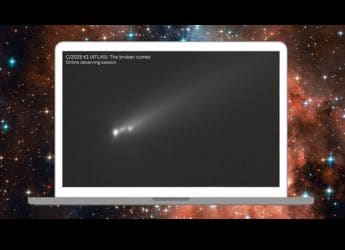- Home
- Science
- Science News
- NASA’s Nancy Grace Roman Space Telescope Surpassing Expectations Even Before Launch, Reveals Research
NASA’s Nancy Grace Roman Space Telescope Surpassing Expectations Even Before Launch, Reveals Research
Roman Telescope has been designed to study the vibrational patterns of millions of stars.

Photo Credit: NASA
Roman Telescope may reveal the largest-ever sample of red giant star vibrations
NASA's upcoming Nancy Grace Roman Space Telescope is already surprising scientists with its expected capabilities, even before its launch, scheduled between late 2026 and mid-2027. New research reveals that Roman will be capable of detecting seismic waves in more than 300,000 red giant stars — many more than originally anticipated. These ripples crawl along the skins of ageing stars, providing readings on their mass, size, and age. Scientists say this bonus ability could transform our understanding of exoplanets and the history of the Milky Way's oldest region.
Roman Space Telescope Could Detect Stellar Vibrations, Offering Insights Into Planet Survival
According to a recent assessment published in The Astrophysical Journal, Roman's design makes this possible without any additional effort from the telescope. Experts noted that its wide-field view and regular 12-minute observing cycle for the Galactic Bulge Time-Domain Survey will naturally capture the subtle brightness changes caused by stellar oscillations. Researchers described these findings as an example of Roman delivering “richer data than originally expected.”
The telescope is designed to study the vibrational patterns of millions of stars, up to and including how previously known exoplanets whistle into their parent star. This asteroseismic information allows astronomers to learn about planet-hosting stars and whether their planets may survive as their hosts puff up into red giants.
NASA's Roman Telescope Could Map 648,000 Red Giants, Revealing Hidden Stars and Planetary Evolution
Researchers discovered that Roman can detect oscillations in up to 648,000 red giants, creating the largest asteroseismic sample yet and helping refine models of how planetary systems evolve as their stars age.
Experts added that Roman's data may also reveal surprising populations of stars hidden deep within the galaxy's dusty centre, opening new windows into its formation and evolution.
Get your daily dose of tech news, reviews, and insights, in under 80 characters on Gadgets 360 Turbo. Connect with fellow tech lovers on our Forum. Follow us on X, Facebook, WhatsApp, Threads and Google News for instant updates. Catch all the action on our YouTube channel.
Related Stories
- Samsung Galaxy Unpacked 2025
- ChatGPT
- Redmi Note 14 Pro+
- iPhone 16
- Apple Vision Pro
- Oneplus 12
- OnePlus Nord CE 3 Lite 5G
- iPhone 13
- Xiaomi 14 Pro
- Oppo Find N3
- Tecno Spark Go (2023)
- Realme V30
- Best Phones Under 25000
- Samsung Galaxy S24 Series
- Cryptocurrency
- iQoo 12
- Samsung Galaxy S24 Ultra
- Giottus
- Samsung Galaxy Z Flip 5
- Apple 'Scary Fast'
- Housefull 5
- GoPro Hero 12 Black Review
- Invincible Season 2
- JioGlass
- HD Ready TV
- Laptop Under 50000
- Smartwatch Under 10000
- Latest Mobile Phones
- Compare Phones
- Huawei Mate 80 RS Master Edition
- Huawei Mate 80 Pro Max
- Huawei Mate 80 Pro
- Huawei Mate 80
- Huawei Mate X7
- Honor 500
- Honor 500 Pro
- Lava Agni 4
- Asus ProArt P16
- MacBook Pro 14-inch (M5, 2025)
- Huawei MatePad Edge
- iQOO Pad 5e
- Huawei Watch Ultimate 2
- Huawei Watch GT 6 (41mm)
- Acerpure Nitro Z Series 100-inch QLED TV
- Samsung 43 Inch LED Ultra HD (4K) Smart TV (UA43UE81AFULXL)
- Asus ROG Ally
- Nintendo Switch Lite
- Haier 1.6 Ton 5 Star Inverter Split AC (HSU19G-MZAID5BN-INV)
- Haier 1.6 Ton 5 Star Inverter Split AC (HSU19G-MZAIM5BN-INV)

















